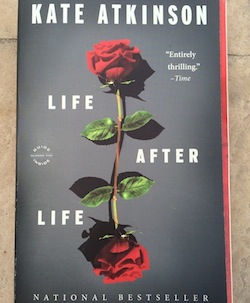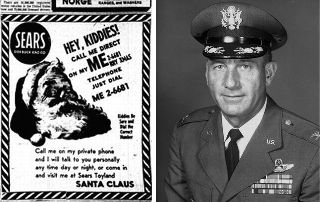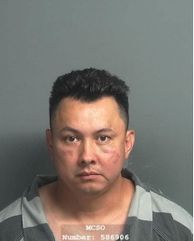- Sections :
- Crime & Public Safety
- Restaurants & Food
- Sports
- More
Categories
Book review: 'Life After Life'

If a choose-your-own-adventure book was transformed into a piece of literature, the result would be something rather like Kate Atkinson’s 2013 novel, Life after Life. Atkinson’s novel follows all the lives the main character, Ursula Todd, could have lived through a stop-and-start narrative accompanied with dates. The story begins with Ursula’s story stopping before it starts, with Ursula as a stillborn baby on a cold February night when the doctor couldn’t make it through the snow in time. However, the next chapter shows a doctor who did make it on time, and subsequently an Ursula who lived. Ursula meets her end in a variety of ways, inevitably followed by the phrase “darkness fell” as the novel progresses, but her life always begins again to trace a different path Ursula could have lived.
Some of the choices Ursula makes affect the narrative considerably, and sometimes it seems more as though Atkinson is emphasizing the effects chance can have on life. Seemingly random characters disappear in some stories and come back at later times in others. A side plotline regarding a dark figure lurking near Ursula’s childhood home is narrowly avoided in some stories but is more prominent in others, though the mystery remains consistently unsolved. In some lives she is married, in some she dies alone, in some she lives in London, in some she moves to Germany. In one particularly probability-defying narrative, Ursula meets the Führer through her friend Eva Braun and temporarily lives up at Berghoff, his mountain house. In another, she is raped by a friend of her brother’s and consequently becomes pregnant, then disappears into a repressive marriage.
Even though Ursula’s lives change at times dramatically, Atkinson still draws constants in the narrative. The largest constant in the narrative is Ursula’s family. Ursula remains the third of five children. Her father always serves in the First World War. She always stays fond of her younger brother, Teddy. Her aunt Izzie is always free-spirited and sporadically dotes on Ursula. Her mother always stands in opposition to much of what Ursula does, regardless of the path of her life.
However, as the reader advances in the novel, Ursula begins to develop a sort of acknowledgement to her own past lives, notably pushing her housekeeper down the stairs to avoid the woman’s death by deadly flu. Her family sends her to a psychiatrist who introduces the idea of reincarnation to the novel, asking her probing questions that ten-year-old Ursula mostly avoids. The idea remains, however, through the novel, as different versions of Ursula recall strange things from the past, lives that supposedly never were.
The seemingly endless cycle of lives and changes requires a healthy dose of suspension of belief from the reader, but in the end the novel’s intriguing premise remains. The author follows her character through all of the variations on her life, and as the reader, we are pulled along to experience them all, uncertain whether any of Ursula’s lives is the ‘real one,’ or whether that definition ever existed in the first place.
Some of the choices Ursula makes affect the narrative considerably, and sometimes it seems more as though Atkinson is emphasizing the effects chance can have on life. Seemingly random characters disappear in some stories and come back at later times in others. A side plotline regarding a dark figure lurking near Ursula’s childhood home is narrowly avoided in some stories but is more prominent in others, though the mystery remains consistently unsolved. In some lives she is married, in some she dies alone, in some she lives in London, in some she moves to Germany. In one particularly probability-defying narrative, Ursula meets the Führer through her friend Eva Braun and temporarily lives up at Berghoff, his mountain house. In another, she is raped by a friend of her brother’s and consequently becomes pregnant, then disappears into a repressive marriage.
Even though Ursula’s lives change at times dramatically, Atkinson still draws constants in the narrative. The largest constant in the narrative is Ursula’s family. Ursula remains the third of five children. Her father always serves in the First World War. She always stays fond of her younger brother, Teddy. Her aunt Izzie is always free-spirited and sporadically dotes on Ursula. Her mother always stands in opposition to much of what Ursula does, regardless of the path of her life.
However, as the reader advances in the novel, Ursula begins to develop a sort of acknowledgement to her own past lives, notably pushing her housekeeper down the stairs to avoid the woman’s death by deadly flu. Her family sends her to a psychiatrist who introduces the idea of reincarnation to the novel, asking her probing questions that ten-year-old Ursula mostly avoids. The idea remains, however, through the novel, as different versions of Ursula recall strange things from the past, lives that supposedly never were.
The seemingly endless cycle of lives and changes requires a healthy dose of suspension of belief from the reader, but in the end the novel’s intriguing premise remains. The author follows her character through all of the variations on her life, and as the reader, we are pulled along to experience them all, uncertain whether any of Ursula’s lives is the ‘real one,’ or whether that definition ever existed in the first place.
Comments •

















